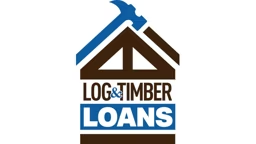
When taking on any log home construction project, a builder has to make three basic assumptions:
- The customer owns property and knows exactly where the home will be placed on the site before the design is done. That’s key.
- They know what they want within the design element, type of foundation (crawl space versus slab versus walkout) and type of finished elevations.
- They have a predetermined budget before they start the design. Without knowing exactly what they can afford, no design is going to be effective against the cost. Often, it’s not the home’s “box” that drives up construction expenses, it’s what goes into it.
From a builder’s point of view, we have to provide a sound, strong structure that incorporates efficiencies as they relate to maintenance and energy consumption. But, if given the opportunity, there’s so much more we can do to save you money.
Save from the Ground Up
As builders, we can apply “value engineering” by starting with the property. We have to know exactly where the house is going to sit on the land and what type of foundation will be used in order to minimize the design’s financial impact on construction.
Sometimes moving the house’s planned location a mere 5 feet can save thousands of dollars, especially in rural areas. For instance, if a house is originally sited on a slope, moving it away from the slope could mean decreasing the height of the foundation, saving you money on materials. Or, if you encounter subsurface rock that would prohibit you from digging a basement, that, too, could impact your cost in the design.
Once you’ve established your site conditions, a builder is going to look at the design’s uniformity. Complexity is costly. Any time a builder is working with long, straight, linear lines within the foundation, he or she can save money. But that doesn’t mean your home’s design has to be dull.
As an example, if you want to incorporate a bump-out for a bay window, it’s better to design the foundation as a straight wall and then cantilever the bowed space so it hovers above.
Here’s why: To create a foundation that mirrors the outline of the design, you have the cost of excavation to add the additional square footage of the bump-out; you have the cost of the concrete slab for that additional square footage; and you have the cost of the extra blockwork or other foundation material, thereby significantly increasing the quantity of material and labor required just for that bump-out area.
By contrast, if you cantilever a bay window, you’re talking about a floor joist or a floor truss that you’d need regardless of whether you bump the basement’s footprint out or not. This is just one small example of how you can create fairly sizeable cost savings, while adding usable square footage and volume in your design.
Opt for Building Systems
Another tip: Incorporate as many building system components (floor trusses, roof trusses, panelized interior wall assemblies) in the design as you can. Prefabricated components, such as these, take a fraction of the time to put into place than does site-built construction, generating significant savings on labor without sacrificing quality.
Likewise, if your home has gables, design them to be built with 2-by-4s or panels covered with log siding, shingles or a contrasting material, rather than crafting the gables out of full logs. Again, this goes back to the complexity of the log package creating cost. A pre-fab gable will be less time consuming for the builder to erect and won’t detract from the authenticity of your log home.
Keep it Simple
The level of detail a home has can require a great deal of a building crew’s time and expertise and result in added site costs. Where we spend the most time and money on a home is on detailed trimwork and intricate roof systems. Offsets, like where the roof doesn’t come right down to the wall in a loft, require a builder to trim around them, and doing it right takes more time than you’d think.
One way to reduce complex trim is to strategically place doors within your home. Think about how you’re going to move around in the house efficiently, but eliminate multiple or unnecessary doors to reduce labor and materials costs. A perfect example is an enclosed water closet within a master bathroom. Keep the door to the toilet area for privacy, but instead of installing a door that leads into the bath, opt for a case opening so the main part of the bathroom is exposed to the bedroom.
Pocket or barn doors also can save you money and free up usable square footage by eliminating the need for door-swing clearance. In new construction, a pre-assembled pocket door won’t cost your builder more time or labor to install than a standard swinging door.
Another money-saving tip: Design to whole numbers (6 feet, 8 feet, etc.) based on how lumber is sold, rather than feet and inches. For instance, if you’re planning a deck on the back of your home and you start talking in odd or fractional numbers, your builder will have to order longer lengths than needed (unnecessary materials cost) and then measure and cut each board (added labor cost). Multiply that by 80-plus boards and you’re talking quite a bit of expense you could easily avoid.
Involve Your Builder in the Design
Many log home buyers believe that you need a final design before you approach a builder. Not true! When a builder reviews a set of plans to prepare a bid, he or she takes all of a home’s complexities into account.
So why not ask your builder to review your plans along the way? Designers can be wonderfully creative, coming up with unique and innovative floor plans that look great on paper or 3D-CAD; but in the field, they may be inefficient or impractical to build.
By asking your builder to review your plans before you finalize them, he or she can suggest tweaks in the layout or material selections that could save you significant amounts of cash. Cedar shakes are a prime example: Not only are cedar-shake shingles one of the more expensive products on the market, they also take special knowhow to install.
So though you think you’re ready to absorb the higher price tag of the material itself, many buyers don’t factor in the skilled-labor upcharges that come with installing them, and that drives up construction costs. You have to ask yourself if the value of these design elements justifies the cost. If the answer is yes, go for it! If not, opting for a look-alike will cost less and speed up construction in the process.
These are the kinds of recommendations your builder can make along the design path, if he or she is involved early.
Dan Mitchell owns Eagle CDI in Tennessee and has built close to 100 log homes in his 30-year career. He’s the Knoxville Home Builders Association 2015 Builder of the Year.






_11868_2024-09-17_08-44-256x288.avif)




